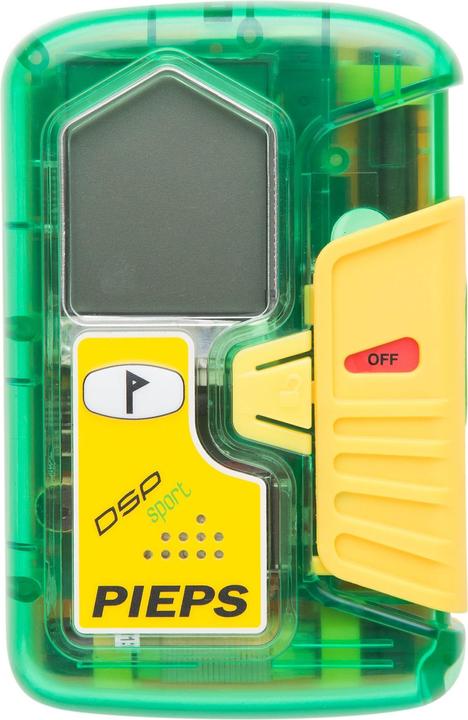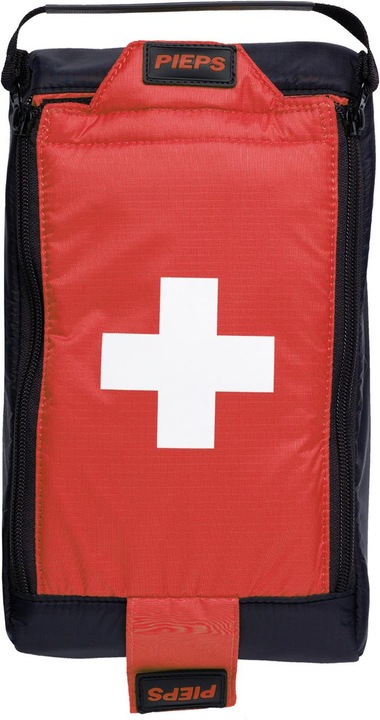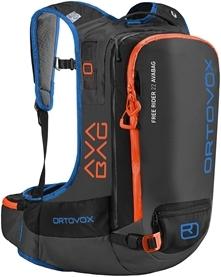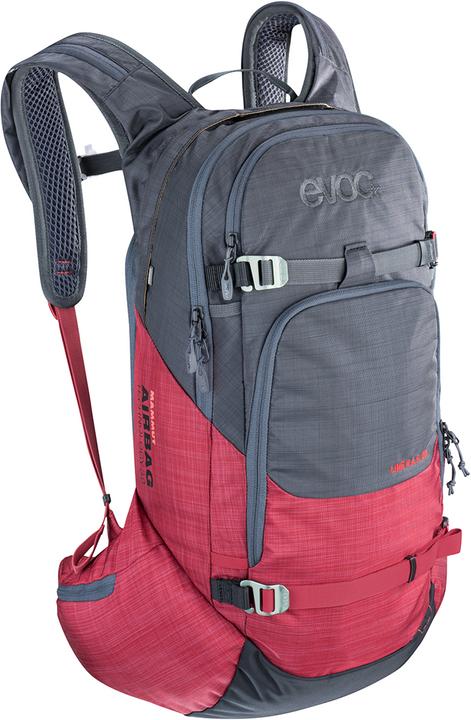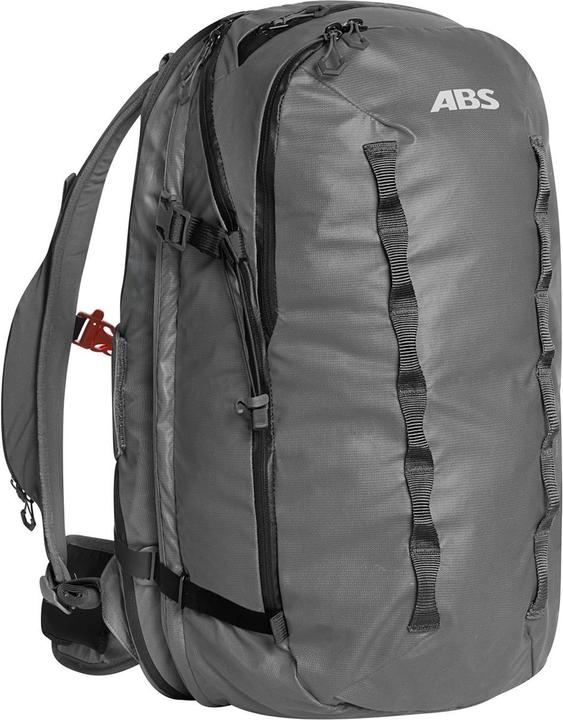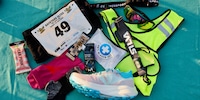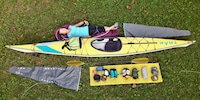

Lifesaving avalanche equipment
Of course you want to have fun. Everyone does. And at the nicest spots, which are usually off the beaten track. That's why we’ve got avalanche transceivers, probes, shovels and avalanche backpacks to keep you safe in the snow and well prepared for any emergencies.
Sometimes it's good to own things you never want to have to use. An avalanche transceiver definitely falls into that category. You might see it referred to in German as an «LVS» for short, which better reflects this small, handy tool than its official title: «Lawinenverschüttetensuchgerät» (literally: searching device for victims buried alive in an avalanche). If you’re heading off-piste, an avalanche transceiver is a piece of kit that’s an absolute must. Why? Because when it’s in transmit mode, it sends signals at set intervals at a frequency of 457 kHz, which is best for passing through snow. In search mode, the transceiver can locate the signal from other devices, and in the worst-case scenario, can help you find where people are buried in the snow.
As mobile phones, other electronic devices and magnets can interfere with transmit mode, you shouldn’t store them next to your avalanche transceiver. You can get belts and harnesses or loops that attach the transceiver to your body. That way, it can still send signals reliably without the risk of getting lost in an avalanche. The complete Mammut set that’s linked further down includes both versions.
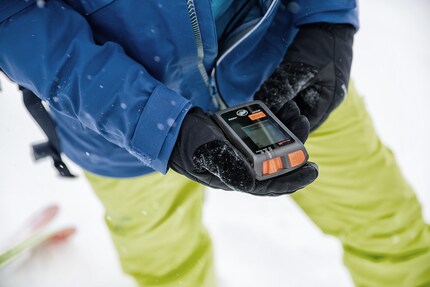
3 antennas, 1 life insurance policy
Modern avalanche transceivers have three antennas, detect interference and automatically switch between antennas to ensure they always have the strongest signal. The older one-antenna devices are analogue and have different transmission characteristics, which often makes signal detection difficult. In other words, they’re not as safe and by no means as intuitive to use. What's more, current devices also provide much better ways to locate several people at the same time. A marking feature also helps you save time when you're searching.
Survival chances of avalanche victims drop significantly after the first fifteen minutes, and knowing what you're doing is helpful in emergency situations just like these. That’s why it’s important to really familiarise yourself with your device and the search technique. Every manoeuvre and every step you do without thinking can potentially be lifesaving.
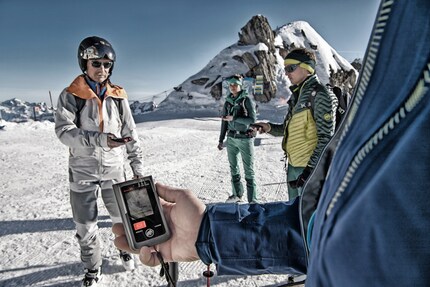
Probe and shovel also essential
An avalanche probe and avalanche shovel are also part of the standard kit so you can rescue as efficiently as possible. Probes help identify the precise location of the person buried under the snow. They’re put in the area of the snow pinpointed by the transmitter until they detect something. But it takes practice and experience to know if what you’ve found is snow, ice, rock the ground or a body. You then use the light yet robust avalanche shovel to dig to find people buried in the snow. The shovel is mostly made of aluminium and features a telescopic handle. Without this tool, it’d almost be impossible to rescue avalanche victims from deep snow.
You can get the transceiver, probe and shovel all in one set, for instance in the Mammut Barryvox S Package. The Barryvox S is Mammut’s top of the range model. It’s a digital-analogue, 3-antenna transceiver with a very large search strip width at 70 m (digital) and 100 m (analogue, for professionals). It features a full-graphic display with customisable interface and a lot more than the basic features. Everything is possible – from fleet configuration to vital data transfer via 3D sensor. There’s also the light Probe 240 and the Alugator Ride shovel made of anodised aluminium.

See all complete sets // See all avalanche probes // See all avalanche shovels
The more technically lean version is called Barryvox. It also has a lot of options, including a large search strip width of 70 m (digital) and a marking feature. See a side-by-side comparison of the devices (in German).
All current digital 3-antenna devices provide the most up-to-date technology. If the signal strength is good and you know how to use the device, you’ve got a solid base. On Galaxus, you can see any additional features, such as the marking feature or automatic revert to transmit, which is when the device switches back to transmit mode if it’s not moved in search mode for a while, meaning there’s a risk the searching person has become buried by a second avalanche themselves. One of the devices that has both the marking feature and automatic revert to transmit is the Pieps DSP Sport. This avalanche transceiver also automatically switches to what it thinks is the best antenna.
A first aid kit and survival blanket round off your equipment. When a victim is dug out of the snow, their body has to be kept warm until the emergency services arrive.
And what about the bags?
Avalanche backpack: playing the last joker
Fully equipped avalanche backpacks are expensive. Why? Well, they’re not just an empty shell. They actually store an airbag, which can save you from getting buried in an avalanche. It works by keeping you near the surface and offers an extra kind of life insurance. But it’s not to be confused with a free pass for taking risks. It’s more like playing your last joker. And it’s certainly not a replacement for an avalanche transceiver, probe and shovel.
If you get caught up in an avalanche, a cartridge filled with pressurised gas inflates the airbag. As we’re not allowed to store these for safety reasons, they’re not included in our avalanche backpacks. But the good news is you can get hold of these airbags in specialist outdoor shops and have them refilled there as well. If you want to get on a plane with a rucksack like this including the cartridge, you’ll need to contact the airline in advance. Pressurised gas cartridges are classed as «hazardous goods», but the International Air Transport Association (IATA) makes the following exception:
«Avalanche rescue backpack, one (1) per person, containing cartridges of compressed gas in Div. 2.2. May also be equipped with a pyrotechnic trigger mechanism containing no more than 200 mg net of Div. 1.4S. The backpack must be packed in such a manner that it cannot be accidentally activated. The airbags within the backpacks must be fitted with pressure relief valves.»
Ortovox’s AVABAG
One of the smallest and lightest systems is designed by Ortovox and is called AVABAG. It weighs 690 grammes and only takes up 1.8 litres of the total rucksack volume. It saves on weight in a variety of ways, including with the carbon cartridges. If there’s no in-built cartridge, you can use it for training – you have to pull a handle to trigger the system. If the system is «loaded», the cartridge ensures the airbag fully inflates around your rucksack within three seconds of triggering. The whole unit can be removed and integrated into other kinds of Ortovox Avabag rucksacks.
Mammut’s R.A.S.
Mammut’s airbag system is called R.A.S. It’s fully removable, and the manufacturer has granted licences to other brands. This means its compatible with a lot of other rucksacks. And you obviously also have the option to buy models from us that can be upgraded later down the line. The Evoc Line R.A.S. already contains an airbag. Mammut includes instructions to help make sure you’re assembling it correctly.
ABS’s P.Ride and s.Light
For a long time, ABS was the only manufacturer of avalanche rucksacks. As pioneers, the company uses a dual system. The base unit makes up the back part of the rucksack and contains two separate airbags (TwinBags). It connects to your own rucksack (zip-on), which gives you varying amounts of storage space depending on the model. The ABS P.Ride-System can also be radio control triggered by all members of the group. The smaller and lighter product line is called s.Light and can be combined with all p.Ride compact zip-ons. This airbag system works in the same way, as ABS also uses TwinBags in the p.Ride system. See all ABS products.
Whichever brand you opt for, if you don’t train yourself how to use an avalanche transceiver, probe, shovel and avalanche backpack then even the best equipment is only half as good. It’s important to take the time to become more familiar with the topic of «safety in the snow». This video is a good place to start – although it’s no replacement for real life practice. The video below is in German, but you can click here for an English equivalent.
Have fun in the snow. But careful fun, of course.
This article has been updated and first appeared on 1 January 2019.2019
Simple writer and dad of two who likes to be on the move, wading through everyday family life. Juggling several balls, I'll occasionally drop one. It could be a ball, or a remark. Or both.
Practical solutions for everyday problems with technology, household hacks and much more.
Show all